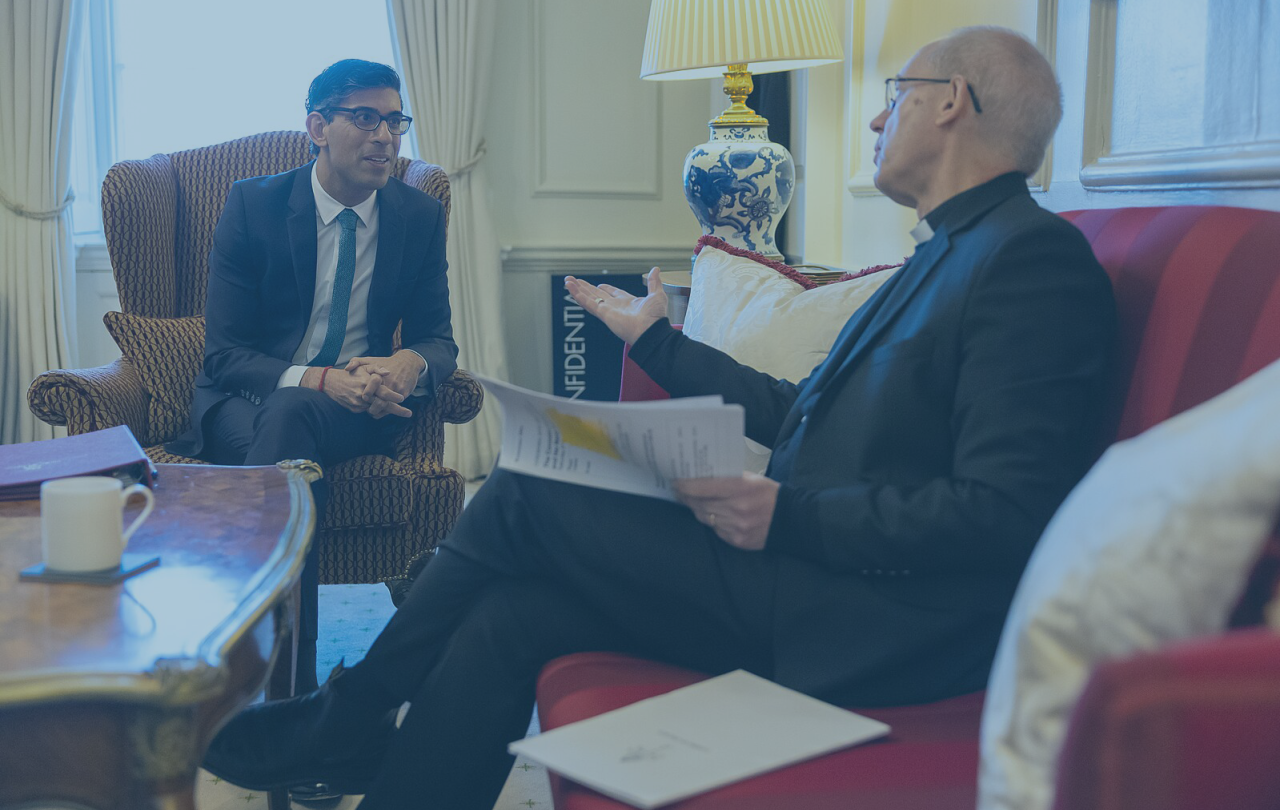
The former Downing Street spin doctor Alastair Campbell once notoriously interrupted a journalist interviewing his boss, the then-Prime Minister Tony Blair, to prevent him speaking about his faith, saying ‘We don’t do God’.
But we know that many of our politicians do indeed ‘do God’; Gordon Brown was famously a son of the manse, who promised to lead a government with a ‘moral compass’. David Cameron declared that his Christianity existed, albeit that it ‘comes and goes’ like the Magic FM reception in the Chilterns, while Theresa May, also the child of a clergyman, described how her faith in God made her convinced she was ‘doing the right thing’ as Prime Minister.
And Boris Johnson, originally baptised as a Roman Catholic as a baby, went Anglican while at Eton, and then re-crossed the Tiber to become Britain’s first Catholic Prime Minister. Before he left office, he commissioned an independent review to look at how the government should engage with faith groups. Four years later, based on conversations with over 20,000 people, ‘Does government do God?’ has been published. Has the government now admitted it does in fact do God? Or at least, that it would like to?
The review is clear that faith makes a massive contribution to the life of our country. It examines the role of people of faith and places of worship in many areas of society - education, prisons and the probation service, the UK Armed Forces. It does not shy away from showing us that alongside those of real faith seeking to serve their communities there are those who abuse what they call ‘faith’ for their own ends; it looks at faith-based extremism, financial and social exploitation, and forced marriage. Review author Colin Bloom was clear that the issue of forced and coercive marriages should be a top priority for the government, calling it a ‘burning injustice’ that must not be consigned to what he called the government’s ‘too difficult box’.
Public servants currently receive training on the protected characteristics, but Bloom describes faith as ‘the Cinderella protected characteristic’.
He recommends faith literacy in the public sector be improved as it is key to allowing the government to tackle these issues. Public servants currently receive training on the protected characteristics, but Bloom describes faith as ‘the Cinderella protected characteristic’. His report suggests that faith literacy is low across not just across the public sector, but across the country, including the media. Religious literacy training and a new Independent Faith Champion are just two of the 22 recommendations of the review, that go right across government, which government will consider and respond to in due course. At a briefing on the review, Bloom noted that there had been many previous reports with similar recommendations, but that these had not been followed through, adding ‘I just wish that either this Government, or whatever comes next, will be the Prince Charming that will take this Cinderella to the ball’.
So why does government need to be more aware of, and more willing to engage with, people with faith? This report’s key message is that faith is an ‘overriding force for good’. One respondent told the review:
‘Imagine if churches and other places of worship removed their time, money, creativity and energy from public life… What would happen to the army of volunteer chaplains in prisons, universities and hospitals?’.
From over 21,000 responses, the majority of people who contributed to the review research were clear that faith and religion are beneficial for society. Over half of respondents gave faith and religion a 10 out of 10 rating for contribution to society, and over 84 per cent scored the social contribution as positive.
The priest and psychologist Henri Nouwen spoke about how, for Christians, action is a grateful response that flows from our awareness of God’s presence in this world. Jesus’s whole ministry was a great act of thanksgiving to his heavenly Father. Nouwen observed that:
‘Teresa of Avila built convents as if she would never get tired; Martin Luther King, Jr., preached, planned, and organized with an unquenchable zeal; and Mother Teresa of Calcutta is fearlessly hastening the coming of the Lord with her care for the poorest of the poor’.
There are thousands of examples of how faith has motivated people to change the world around them for the better. The Bloom review cites the Mildmay Mission Hospital in London as just one example. Established as a Christian response to the cholera outbreak in the 1860s, it became one of the world’s leading centres in care for people living with HIV and AIDS and continues to be ‘an organisation that derives inspiration from its faith-based values’.
Faith that changes lives is not just something from the past. The recent census showed us that there are still more people in the UK who have a faith than not. The religious landscape of the UK may have changed hugely since Alastair Campbell declared that ‘We don’t do God’. It is now far more diverse, arguably now even more exciting. Faith still makes a difference, changes lives, builds communities. Mr Bloom concludes that ‘without faith, places of worship and people of faith, this country would be poorer, blander, and less dynamic’. Faith, he says, is a force for good that government should do more to understand. The government should indeed do God. And this review and its recommendations suggest there is lots of room for improvement in just how they do it.





